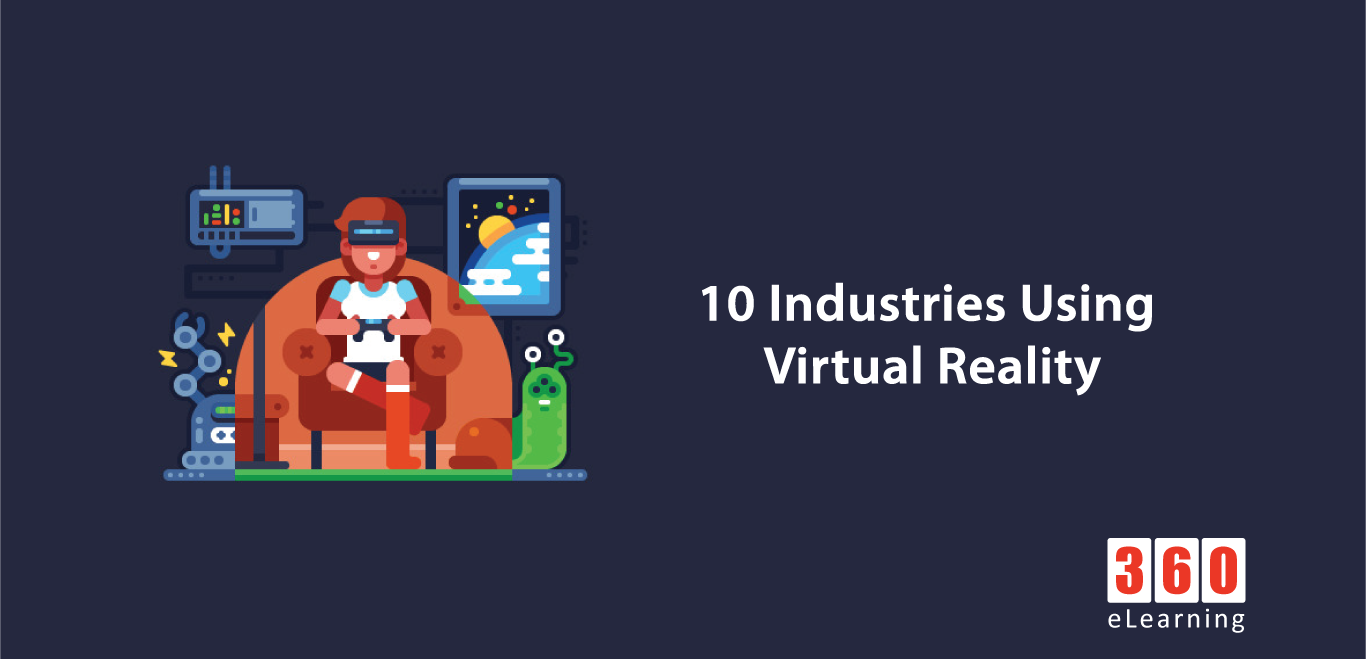In starting of the age of virtual reality, this term is associated with gaming, but as the technology progresses, more and more uses are coming up and now it is being used in many other industries for training purposes. Below are 10 different industries that are using virtual reality and how they’re incorporating it into everyday life.
1. Healthcare
Virtual reality has many applications in healthcare department. One of the use, which is actually not brand new, is the use of VR in therapy. For example, psychiatrists at the University of Louisville use VR in cognitive behavior therapy to treat patients with social anxieties or phobias of things like flying, public speaking, or heights. The controlled environment allows doctors to expose their patients to simulations and direct them on how to cope with how they’re feeling.
2. Entertainment
Entertainment will likely be the strongest examples of the change that virtual reality will bring to the industry, and gaming is one of the mostly used. There are many apps in market like Oculus Cinema that allow users to watch a movie.
3. Automotive
Automotive companies currently uses virtual reality to help get a sense of how customers experience their cars. Like Ford Motor Company currently use Oculus Rift headsets, to look at high def renderings of the interiors and exteriors of cars. They’ve also developed prop-like tools, such as a flashlight, to be used in the VR experience to simulate the experience of looking around a car in the dark, for example. The benefit to all this is that Ford can get a jump on the product develop process without having to wait for a physical prototype of a new model.
Similarly, Audi announced this year that they’d be using VR later in the year to give potential car buyers an in-depth look at their cars, as well as the ability to customize not just colors, but electronics systems, inlays, and even the interior leather.
This year Toyota used virtual reality as part of its TeenDrive365 campaign to educate teenagers and parents about distracted driving. The distracted driving simulator included sensors that translated what the user was doing with the pedals or steering wheel into the simulation, and included built-in distractions like a ringing cellphone and chatty friends in the backseat.
4. Advertising
A report released by Forrester Research said 42% of U.S. online adults have never heard about VR headsets and that an additional 46% said they don’t see a use for VR in their lives.
Meanwhile, a separate report by marketing services outfit Yes Lifecycle Marketing says only 8% of marketers are curerntly using VR in their advertising. Thirty-five percent of those surveyed said they either have no intentions or have reservations about using the tech, while 57% said it does not apply to them.
5. Education
Education is another area which has adopted virtual reality for teaching and learning situations. The advantage of this is that it enables large groups of students to interact with each other as well as within a three dimensional environment.
It is able to present complex data in an accessible way to students which is both fun and easy to learn. Plus these students can interact with the objects in that environment in order to discover more about them.
6. Tourism
The big opportunity for virtual reality will be helping consumers make decision about where to travel, according to analysts at tourism market research firm Phocuswright. An example of this comes in the form of virtual tours, which will allow travellers to experience a holiday destination before booking their trip.
7. Space
NASA’s been using VR for years, especially in training situations. One recent use has more to do with improving the quality of life and mental health of astronauts on longer term missions. The idea is a Virtual Space Station, which would be “a set of interactive behavioral health training and treatment programs with support from NASA’s National Space Biomedical Research Institute,” according to a release. And Dartmouth’s Digital Arts Leadership and Innovation lab got a $1.6 grant for the project.
8. Skilled trades
Welding is an old trade, but now training can be supplemented with virtual reality. One immediate benefit is that using virtual reality training means money doesn’t have to be spent on materials to practice on, and the trainees can repeat the task as many times as they need to. It won’t replace traditional training, but it can make the process faster and cheaper.
9. Corporate / Business Sector
Virtual reality is dominating hype in gaming and entertainment circles this year. But a growing number of impressive use cases in enterprise settings are demonstrating just how transformative this technology could be
10. Military and Law Enforcement
The relationship between games and the military is long held and tight knit. In the mid-1980s the US Army modified the Atari tank battle game Battlezone to more closely mimic the gunner controls of a Bradley Infantry Fighting Vehicle.
The US Defense Advanced Research Projects Agency approached many mainstream game developers around that time petitioning them to create video games that could be used to train soldiers (Chuck Benton, creator of the seminal racing game, B.C. Quest for Tyres, was an early recruit). Later, the US Marine Corp famously used a modified version of Doom II to teach new recruits. Lieutenant Colonel Rick Eisiminger, then team leader of the Modeling and Simulation Office, told Wired at the time: “We were tasked with looking at commercial off-the-shelf computer games that might teach an appreciation for the art and science of war.”


